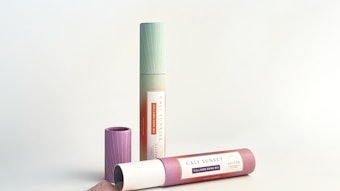Although Western Europe, Asia Pacific and North America together account for more than 70% of sales in terms of value, manufacturers with plans for global domination need to look outside of these mature markets to realize the sector’s full potential. Forecast average annual growth of slightly more than 1% in Western Europe and North America to 2010 is smaller in actual terms than that predicted for Eastern Europe, Latin America and, especially, Asia Pacific, where figures are buoyed by China and India. Manufacturers keen to reignite growth should prioritize these markets.
Development in both Latin America and Eastern Europe since 2000 has been underpinned by the increased spending power of working women. Economic recovery and awareness of global fashion fads in Brazil and Russia also have helped create demand for more sophisticated products. Asia Pacific’s hair care performance has, until recently, been underpinned by Japan. China and India, however, are beginning to plug the gap created by the low-growth forecasts for Japan.
Brazil and China Boost Sales
Although Venezuela has been the most dynamic market in terms of hair care sales throughout the past five years, Brazil, Russia, India and China are the individual markets of distinction—with dynamic growth resulting in sizable value gains. Looking forward to 2010, Brazil and China are set to sustain current growth rates, with average annual growth of 8% and 12%, respectively.
In Brazil, hair care accounts for more than 25% of the total cosmetics and toiletries market, and has posted double-digit growth for the last past years—in spite of relatively high penetration. This is largely due to the attention that con sumers pay to their hair. Washing hair twice daily is not uncommon in Brazil’s humid climate. Given that basic products are accepted by the vast majority of the population, manufacturers have stimulated demand by refining segmentation strategies: demographic group, hair type and treatment benefits.
Unilever’s relaunch of Seda (Sunsilk) indicates that the company is employing a mega brand strategy, offering products for all hair types, colors and seasons. Given that the aging population is at the forefront of government concerns, with forecasts that the number of Brazilians age 70 and older will rise from 7.7 million in 2004 to 34.3 million in 2050, hair care manufacturers could prosper by targeting this group specifically—as Unilever did with Sunsilk Aging Care in Thailand.
Shampoo Staying Strong
The largest subsector within hair care is shampoo, with sales of $14.8 billion in 2005. At a global level, it is evolving at a slightly higher rate than hair care overall. In mature markets, the increased penetration of highly sophisticated, technologically advanced product formulations within the upper mass-market segment has been a key strategy. Several mainstream brands—including Pantene, Clairol Herbal Essences and L’Oréal Elsève/Elvive—increasingly offer premium attributes such as vitamins, sun protection and aromatherapeutic qualities to push products higher up the price platform.
Last year, the trend toward upper-mass products was especially evident in the Japanese market, where new shampoos such as Fino from Shiseido, Asience from Kao and Resche from Kanebo contributed to an increase in average unit prices. In the U.K., Alberto-Culver stole share from Unilever due to the roll-out of its TRESemmé brand in 2005. Enjoying high credibility among consumers with its salon heritage, TRESemmé struck a nerve in the U.K. by offering what is perceived as premium hair care at affordable prices. Other professional hair care brands, including John Frieda and Nicky Clarke, suffered in turn, and are expected to lose value share in the future.
Already struggling with brand loyalty, the shampoo sector faces more difficulties due to discounting and expanded availability through supermarkets and other mass outlets. Budget and private label formulations also have become more sophisticated, with consumers increasingly able to spend less for more. In mature markets, manufacturers need to differentiate themselves to ensure that they continue to win consumer loyalty in the face of ongoing price wars between supermarkets, discounters and pharmacies.
Conditioner Captivates Consumers
The conditioner sector, with 9% growth globally, was the most dynamic hair care subsector in 2005. The sales decline of two-in-ones is fueling conditioner’s growth, and consumers’ preference for separate products is becoming common even in emerging markets. China is the largest global market for two-in-ones, but Chinese consumers appear to be ditching the format in favor of conditioners. This may be attributed to successful marketing by manufacturers that convince consumers of the need to protect hair against colorants, styling agents and daily pollutants. Manufacturers that are keen to seize the share of sizable growth forecast for India, already the fourth-largest market in the world, need to grasp local nuances.
Styling Agents Lost Their Stick
Once the darling of hair care, styling agents appear to be losing their grip, with less than 2% growth throughout the past year. The U.S., Japan, France, Germany and the U.K., all large markets, have registered minimal growth since 2004. With a natural look in vogue and shampoos increasingly taking on styling properties, the future of styling products looks bleak. Dove’s range of styling products, however, is a notable success story. The range was launched in 2005 in the U.S., and rapidly seized a 2% share of a market in which it had no presence. Its success can be attributed to both its unique positioning and the extensive advertising campaign that supported the launch. The campaign focused on four female cartoon characters: Wilma from The Flintstones, Marge from The Simpsons, Velma from Scooby-Doo and Jane from The Jetsons—each known for a particular, unchanging hairstyle. The idea is that these women have been forever stuck in their styles, which is a metaphor for real-world women whose use of traditional styling products has left their hair stiff and sticky. The advertisements show these characters with new, more appealing hairdos styled with Dove products. Manufacturers could follow Unilever’s lead by attempting to create a need for such products, even when fashion trends say they are not in vogue.
Complacency Not an Option
Although growth potential is high in the less mature regions, manufacturers must continue developing their product ranges in the U.S., the U.K., France and Japan to keep a foothold in the global market. The rising disposable income of tweens and teens is creating distinct consumer segments in these countries.
Men’s hair care also presents an area of opportunity that is relatively untapped. The majority of men’s hair care consists of male-focused colorants to hide gray. However, this market is nearing maturity. The majority of potential for growth lies with male-focused shampoos, conditioners and styling products. For the most part, male-specific shampoos and conditioners have yet to meet with great success. There is a needs-based question here. Unlike deodorants, where manufacturers have convinced men and women that they need separate products, that division has not been established with shampoos and conditioners. Were manufacturers to push to convince men that unisex shampoos were not strong enough for their hair, there might be greater segmentation and development of a new category.
The Fall of the Mega Brand?
The expansion of hair care lines into a broader range of products has been apparent throughout the past year with the rise of the mega brand. Major players such as Shiseido, Avon, Unilever and Procter & Gamble chose to focus innovation on a handful of high-impact brands. Brands have been split into new categories and extended into different sectors to scoop up sales and broaden appeal among a wider consumer base. The theory is that manufacturers can milk broader industry trends and target new lucrative groups such as ethnics, teens and tweens, and grays while reinforcing brand equity. In the U.S. and Western Europe, in particular, ethnic consumers have become an important niche for mainstream manufacturers. L’Oréal has a Chicago-based center that does nothing but research ethnic hair and skin, and P&G’s Pantene Pro-V has a complete range of products for the ethnic consumer. Given the potential for this segment, manufacturers cannot afford to ignore a lucrative group. By professing expertise in Hispanic hair, straight hair, long hair and so on, however, it remains to be seen whether these companies run the risk of losing credibility by overextending products and their images.










